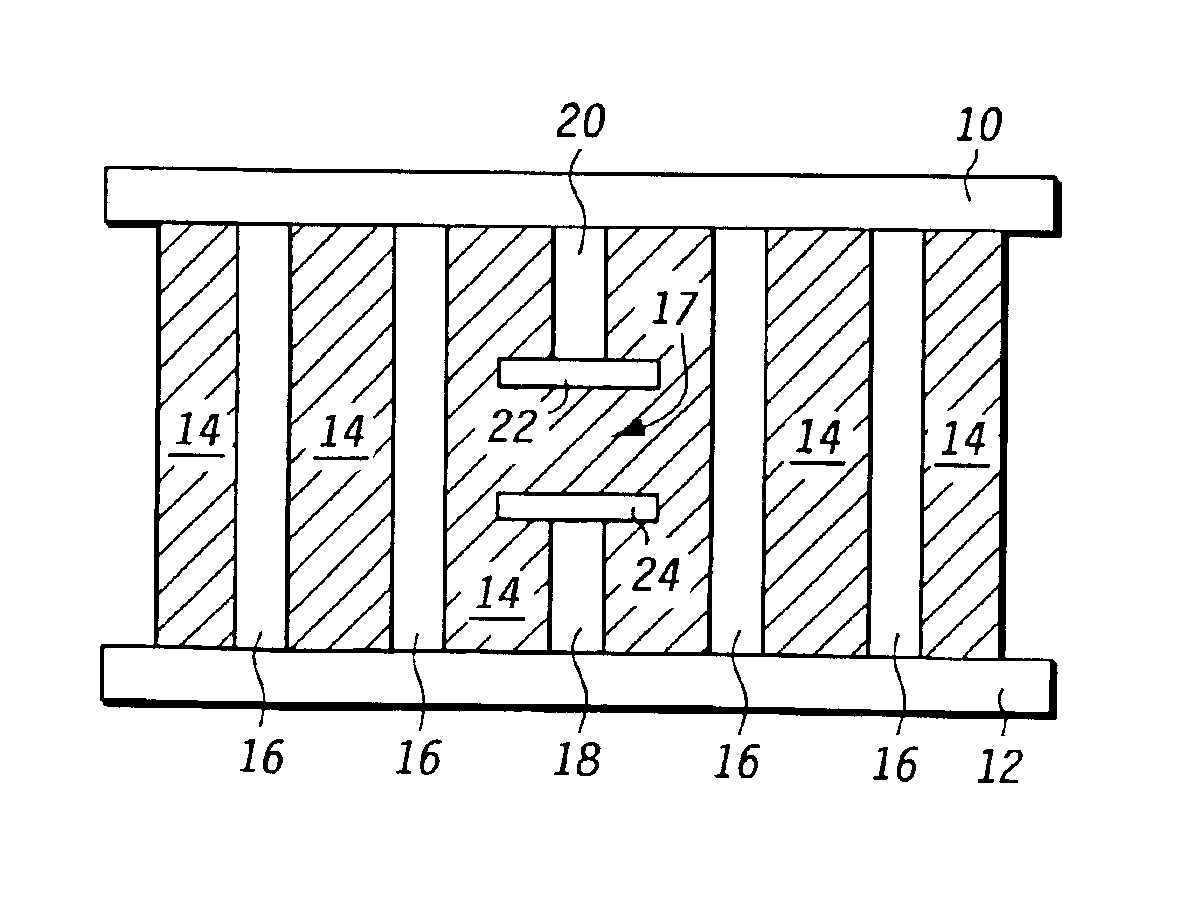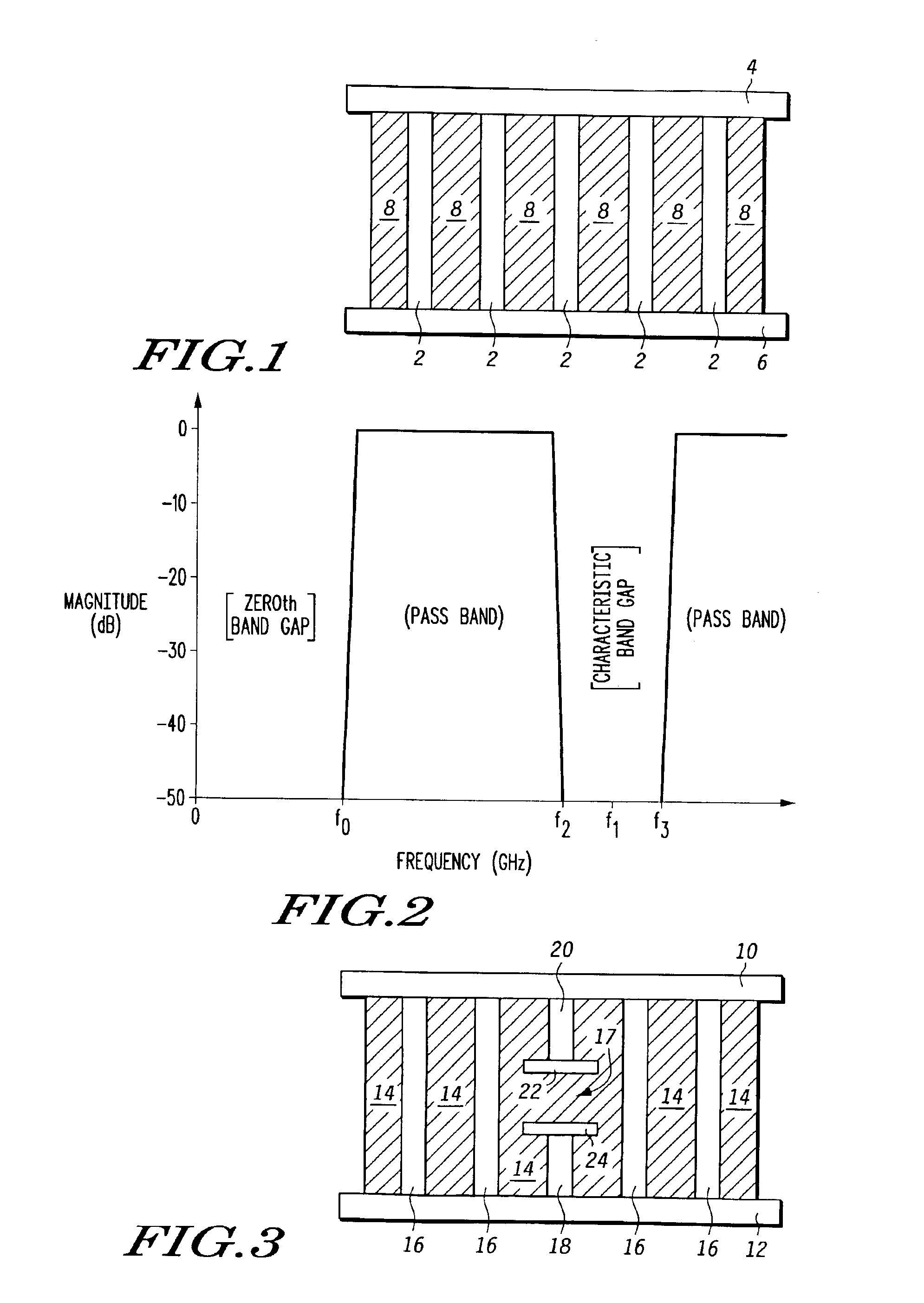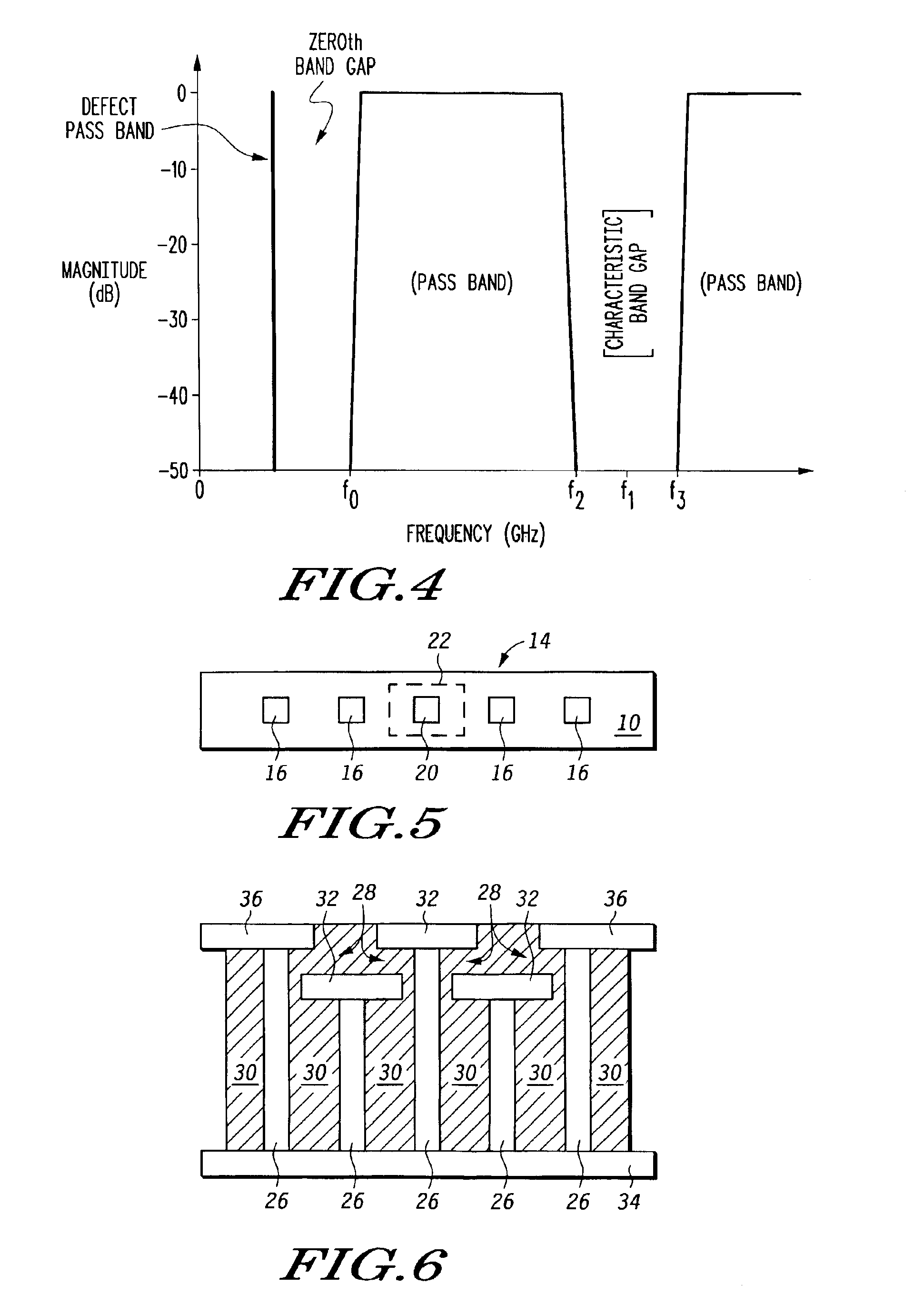Electromagnetic band gap microwave filter
a microwave filter and electromagnetic band gap technology, applied in the field of electromagnetic band gap microwave filter, can solve the problems of ebg structure blocking the transmission of signal, increasing the demand for high-performance electronic filters, and increasing the demand for electronic filters
- Summary
- Abstract
- Description
- Claims
- Application Information
AI Technical Summary
Problems solved by technology
Method used
Image
Examples
Embodiment Construction
[0022]Electromagnetic Band Gap (EBG) or Photonic Band Gap (PBG) crystals offer a powerful method of controlling the propagation of Electromagnetic (EM) waves. To understand the basic concepts involved, we draw an analogy with electronic semiconductor materials. Crystalline semiconductors are composed of a periodic arrangement of a basic building block of atoms. Therefore, a crystal in this context can be considered a periodic potential that a propagating electron encounters. Thus, the geometry and symmetry of the crystal dictates many of the conduction properties of the crystal. In particular, due to Bragg-like diffraction from the periodic potential, electrons are forbidden to propagate with certain energies in certain directions. If the periodic potential is strong enough, the gap might extend to all possible directions resulting in a complete band gap. For instance, an insulator has a complete band gap between the valence and conduction energy bands.
[0023]In EBG or PBG crystals, ...
PUM
 Login to View More
Login to View More Abstract
Description
Claims
Application Information
 Login to View More
Login to View More - R&D
- Intellectual Property
- Life Sciences
- Materials
- Tech Scout
- Unparalleled Data Quality
- Higher Quality Content
- 60% Fewer Hallucinations
Browse by: Latest US Patents, China's latest patents, Technical Efficacy Thesaurus, Application Domain, Technology Topic, Popular Technical Reports.
© 2025 PatSnap. All rights reserved.Legal|Privacy policy|Modern Slavery Act Transparency Statement|Sitemap|About US| Contact US: help@patsnap.com



